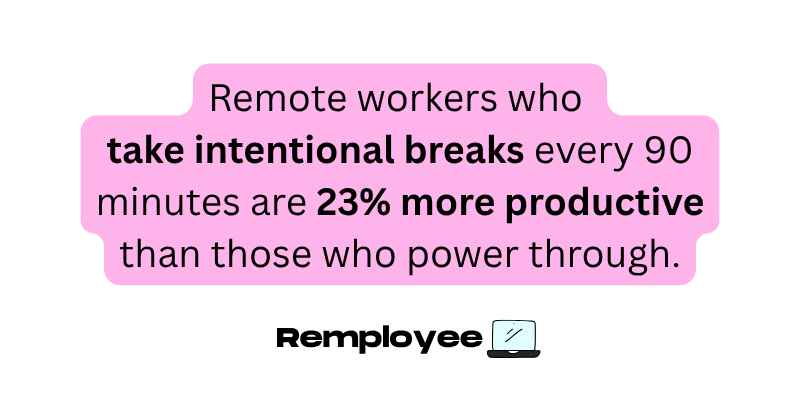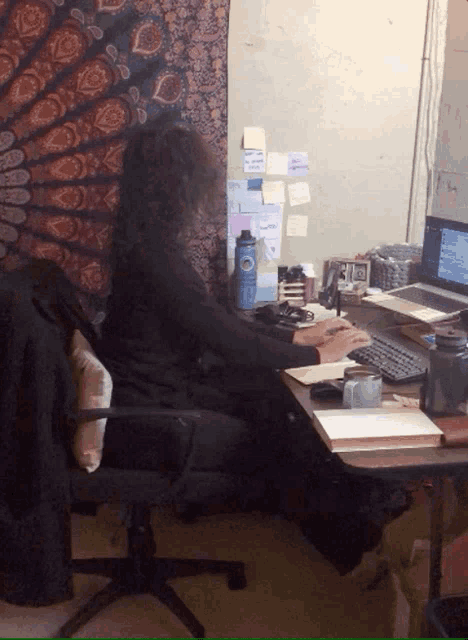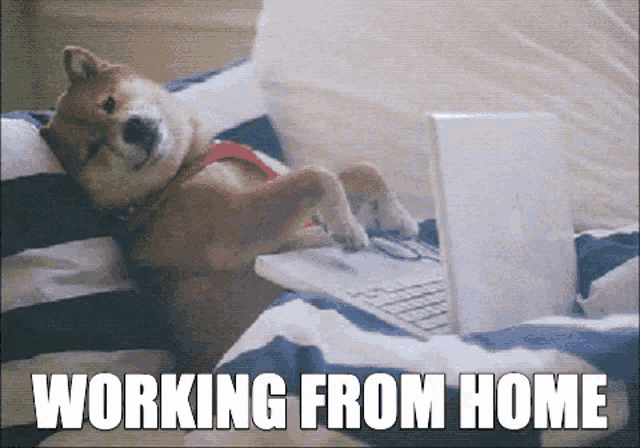The “work from home is perfect” discourse has gotten insufferably binary.
Today, I want to share my nuanced perspective on why I believe remote work, done right, can be incredibly rewarding – despite its very real challenges.
The perfection myth is a witch hunt.
When I first started freelancing remotely three years ago, everyone told me about the freedom. The flexibility. The productivity paradise.
My own experience? It’s more complicated than that.
I’m telling you this because I’ve spent years wrestling through both remote work struggles and office frustrations, and I’ve learned something important.
I figured out the balance.
At first, I was lost. What is this isolating experience where pajamas become a prison? Why was I less productive at home?
I tested strategies. Some failed spectacularly. Others changed everything.
Remote work isn’t automatically better. But it can be.
Here are nine strategies that will transform your remote work from survival mode to something you actually look forward to.
1. Create Your “Office” Ritual (Even If It’s Just Putting On Real Pants)

Look, I get it. The appeal of working in your pajamas is real.
But here’s what I learned the hard way: your brain needs signals.
Last year, a friend of mine was struggling with her new remote marketing job. She’d roll out of bed, grab coffee, and immediately open her laptop. By 2 PM, she felt like a zombie floating through her apartment.
“Where did my day go?” she’d ask me every week.
Then she started what she calls her “fake commute.” Every morning, she gets dressed in real clothes, walks around the block, and comes back “to work.” At 5 PM, she does the reverse walk to “go home.”
It sounds ridiculous, but it works.
Her productivity doubled. Her mood improved. Most importantly, she started feeling like she had control over her day again.
Your brain craves boundaries. Give it some.
2. Master the Art of Strategic Breaks (Not Scroll Sessions)

Here’s a stat that’ll blow your mind: remote workers who take intentional breaks every 90 minutes are 23% more productive than those who power through.
But here’s the catch – scrolling Instagram doesn’t count.
I used to think breaks meant checking my phone. Wrong. Dead wrong.
Real breaks reset your brain. They give your prefrontal cortex time to recharge. They prevent the afternoon crash that makes you feel like you’re swimming through molasses.
The secret? Movement and disconnection.
Stand up. Walk to your kitchen. Do ten jumping jacks. Look out your window for two minutes without thinking about work. Stretch your neck. Pet your dog.
Anything that gets you away from your screen and into your body.
I started setting a timer for every 90 minutes. When it goes off, I stop mid-sentence and take a five-minute break. No exceptions.
The first week felt weird. The second week felt natural. By week three, I couldn’t imagine working any other way.
Your future self will thank you.
3. Turn Your Space Into a Productivity Paradise

My neighbor Mike worked from his couch for eight months during the pandemic.
By month nine, he couldn’t sit on that couch without his shoulders tensing up. His back ached constantly. His girlfriend complained he never fully “left” work because his laptop lived on their coffee table.
Sound familiar?
Here’s what Mike learned: your environment shapes your mindset more than you think.
He didn’t have space for a home office, but he got creative. He bought a small folding desk that he sets up each morning and puts away each evening. He designated one corner of their bedroom as his “work zone.”
Most importantly, he invested in a decent chair. Not a $1,200 Herman Miller, but a solid ergonomic chair from IKEA that supports his back.
The transformation was immediate.
His focus improved. His back pain disappeared. His relationship got better because work had boundaries again.
You don’t need a Pinterest-perfect home office. You just need intentionality.
Even if it’s just a specific corner of your kitchen table—make it yours during work hours.
4. Stop Trying to Prove You’re Working (You Know You Are)

The biggest trap I see remote workers fall into? Performative productivity.
You know what I mean. Responding to emails instantly. Staying online way past 5 PM. Scheduling unnecessary check-ins to prove you’re “really working.”
It’s exhausting. And it’s counterproductive.
I used to do this too. I’d send emails at 7 PM to show my boss I was dedicated. I’d jump on every single Slack message within minutes. I treated my online status like a badge of honor.
Then I realized something: the best remote workers aren’t the ones who perform the most. They’re the ones who deliver results consistently.
Your value isn’t measured by how fast you respond to messages. It’s measured by the quality of your work and your ability to meet deadlines.
Here’s what changed everything for me: I started focusing on outcomes instead of activities.
Instead of “I was online for nine hours,” I started thinking “I completed three major projects this week.”
Instead of instant email responses, I batched communication twice daily.
Instead of proving I was working, I let my work speak for itself.
Trust yourself. You know when you’re being productive.
5. Master the Social Balance (Before You Turn Into a Hermit)
Remote work’s dirty secret? The social isolation creeps up slowly.
At first, you love the quiet. No office small talk. No lunch invitations you feel obligated to accept. Pure, blissful solitude.
Then, three months in, you realize you’ve had exactly two real conversations this week—both with your delivery driver.
This isn’t sustainable.
Humans are social creatures, even the introverted ones among us. We need connection to thrive, not just survive.
But, you have to be intentional about it now.
I schedule social time like I schedule meetings. Tuesday lunch with a former colleague. Thursday evening walk with my neighbor. Weekend coffee dates with friends.
It sounds transactional, but it works.
The key is mixing professional and personal connections. Join online coworking sessions where you work silently alongside others. Attend virtual networking events in your industry. Take calls while walking instead of sitting at your desk.
And don’t underestimate the power of casual interactions. Work from a coffee shop once a week. Say hello to your mail carrier. Chat with other dog owners at the park.
These micro-connections add up, and your mental health will thank you.
6. Create Your End-of-Day Shutdown Ritual (Work Will Always Be There Tomorrow)

The hardest part about working from home isn’t starting work.
It’s stopping.
When your office is your living room, work follows you everywhere. It whispers from your laptop screen during dinner. It texts you at 9 PM. It haunts your dreams with unfinished to-do lists.
This is how burnout begins.
You need a shutdown ritual. Something that tells your brain, “Work is over. Time to be human again.”
Mine looks like this: I review tomorrow’s priorities, write down three things I accomplished today, close my laptop, and physically move it to another room. Then I change clothes—even if I’m just swapping one comfortable shirt for another.
It’s simple, but it works.
My friend Jessica takes it further. She has a “commute home” ritual where she sits in her car for ten minutes, listening to music and decompressing before going back inside.
Another colleague lights a candle to signal the end of his workday and blows it out the next morning when work begins.
The specific ritual doesn’t matter. What matters is that you have one.
Without boundaries, work expands to fill all available time and mental space.
Your personal life deserves protection too.
7. Embrace the Weird Hours (Your Peak Performance Doesn’t Follow Office Rules)
There’s something nobody tells you about remote work: you might discover you’re not actually a morning person.
Or maybe you are, but your most creative hours happen at 2 PM, not 9 AM.
Traditional office hours are built around convenience, not human biology. But when you work from home, you can finally work with your natural rhythms instead of against them – and that’s one big difference between remote and hybrid work.
I spent years forcing myself to be productive first thing in the morning because that’s what “successful people” do. Turns out, my brain doesn’t fully wake up until 10 AM, and my best writing happens between 2-5 PM.
Once I stopped fighting this and started embracing it, everything changed.
Now I use my groggy morning hours for administrative tasks. Email responses. Schedule planning. Brain-dead busy work that doesn’t require creativity.
Then, when my energy peaks, I tackle the hard stuff. The strategic thinking. The creative problem-solving. The work that actually moves the needle.
The key is being honest about when you perform best and structuring your day around those windows.
Your circadian rhythm is unique. Stop pretending it isn’t.
Work smarter, not harder, by honoring your natural energy cycles.
8. Perfect the Art of Saying No (Your Calendar Isn’t a Free-for-All)

Remote work has a hidden danger: people think you’re always available.
Do these sound familiar:
- “Hey, can you hop on a quick call at 3 PM?”
- “Since you’re home anyway, can you handle this project?”
- “You don’t have a real commute, so this early morning meeting should be fine, right?”
If yes, you know the drill. It’s wrong. So very wrong.
Just because you work from home doesn’t mean you work all the time or that your schedule is infinitely flexible.
I learned this lesson when my calendar started looking like Swiss cheese. Fifteen-minute gaps between meetings. No time to think, let alone do deep work. I felt busier than when I worked in an office, but less productive.
The solution? Ruthless calendar protection.
I started blocking time for deep work like it was a client meeting. I instituted “no meeting Wednesdays” to guarantee focused work time. I stopped accepting every invitation just because I was “technically available.”
Most importantly, I learned to say, “Let me check my calendar and get back to you” instead of automatically agreeing to requests.
Your availability is not unlimited just because you’re remote.
Guard your time like the valuable resource it is.
People will respect your boundaries once you establish them.
9. Master the Home-Life Integration (Without Losing Your Mind)

The biggest lie about remote work? That it gives you perfect work-life balance.
The truth? It gives you work-life integration, which can be messier but ultimately more flexible.
You’ll take calls while your dog barks in the background. You’ll throw laundry in between meetings. You’ll have your best ideas while making lunch and scramble to write them down before they disappear.
This isn’t chaos—it’s reality.
The sooner you accept that home life and work life will occasionally collide, the happier you’ll be.
My breakthrough came when I stopped trying to pretend my home didn’t exist during work hours. I started being honest with colleagues: “Sorry, that was my neighbor’s leaf blower.” “Give me two seconds to let my cat out.”
Nobody cared. In fact, these human moments made me more relatable.
The flip side is equally important: work will occasionally spill into personal time. A late-night email. An urgent project deadline. A client in a different time zone.
That’s okay too, as long as it’s occasional, not constant.
The magic of remote work isn’t perfect separation—it’s flexible integration that works for your life.
Some days, work accommodates life. Other days, life accommodates work.
Both can coexist beautifully.
The Bottom Line
Remote work isn’t supposed to be an escape from the office. You should see it as designing a work life that actually works for you.
That said, these ten tips aren’t rules, but starting points.
Some will resonate immediately. Others might feel wrong for your situation. That’s perfectly fine.
The goal isn’t to follow someone else’s remote work playbook. It’s to write your own.
Experiment. Adjust. Fail forward. Find what makes you genuinely excited to start your workday.
Because when you get remote work right, it doesn’t just change how you work.
It changes how you live.
And that’s worth the effort.
After years of freelancing through broken systems and vague job boards, Josie built Remployee to help others find what she couldn’t at first: flexible work that feels like freedom, not chaos. She believes real jobs should fit real lives—and that thoughtful writing can be a bridge to better work. If you’re looking for permission to choose differently, Josie’s already given it.



